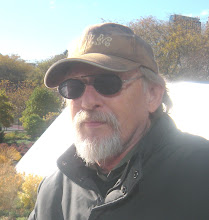Grasp the peacock's Tail
I read somewhere that when Cheng Man-Ch’ing (the
Professor) was asked which movement or posture he felt was the most important
he answered that it was Grasping the Peacock's Tail, which consists of Ward
Off, Roll Back, Press and Push. It is the most frequently occurring movement in
the Yang Style Long 108 Form and is found in the 37 posture short form, the
Yang 24 Bejing form, and is included in the Yang 8 form which we have been
studying lately.
The Chinese name for the movement is Lǎn Qùe Wěi. Its parts are called Peng, Lü, Ji and An. In the Yang Long Form and
in the Professor’s Short Form this follows the Beginning, starting with forming
the so-called Tai Chi ball. The is a Ward Off with the left hand (except in
Yang 8), then a turn to the right with a Ward Off with the right hand while the
left follows. To visualize the next part, the Roll Back, imagine an opponent is
throwing a punch at you; your hands are in a position now to guide the blow
away from your body, and using your opponent’s momentum, to “pull” them
forward. This is followed with the Press, placing the palms together and facing
directly to the right. Shifting the weight back again, sinking, rooted, the hands
spread apart and push outward, roughly at the height of the opponent’s chest. In
the Yang 8 Form we execute Grasp the Peacock’s Tail to the left and to the
right and then proceed to the Closing.
T’ai Chi Ch’uan,
a Simplified Method of Calisthenics for Health & Self Defense by Cheng Man-Ch’ing, North Atlantic Books, Berkley, has a nice section of
photos of the significant postures and explanations of the movements. Here is
an interesting article on stress reduction using this movement: Grasping the Sparrow's Tail. A 5th - 6th Grade Lesson Plan by Michael P.
Garofalo. http://www.egreenway.com/taichichuan/gtst.htm


No comments:
Post a Comment